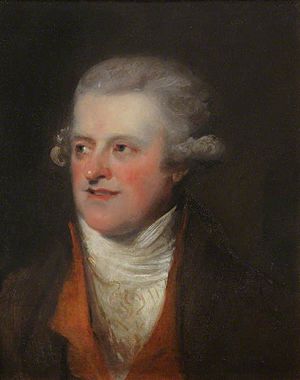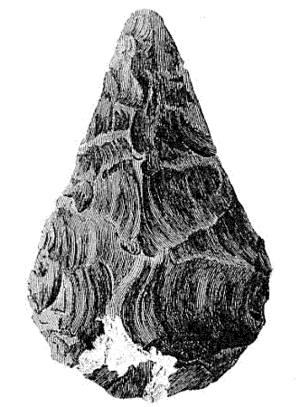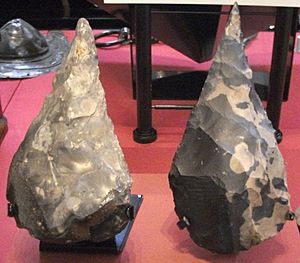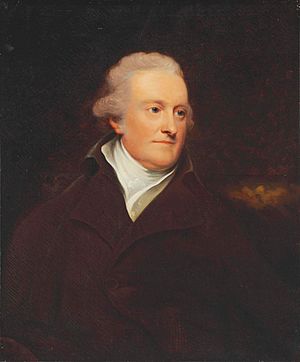John Frere facts for kids
John Frere (born August 10, 1740 – died July 12, 1807) was an English expert in ancient history. He was one of the first people to discover very old stone tools. He found these tools along with bones of large animals that are now extinct. This important discovery happened in 1797 at a place called Hoxne in Suffolk, England. His findings helped us understand more about the Old Stone Age.
Contents
John Frere's Early Life and Career
John Frere was born in Roydon Hall, which is in Norfolk, England. His parents were Sheppard Frere and Susanna Hatley. He had a sister named Ellenor Fenn.
He went to Gonville and Caius College at Cambridge University. In 1766, he earned his Master of Arts degree. He was also a very good student in math, ranking as the "Second Wrangler" in his class. This meant he was the second-best math student that year. After graduating, he became a fellow at the college.
Later, John Frere held several important jobs in government. He was appointed the High Sheriff of Suffolk for a year, from 1776 to 1777. He also served as a member of Parliament for Norwich from 1799 to 1802. This meant he helped make laws for the country.
Discovering Ancient Tools
John Frere became very interested in the past. He noticed old stone tools in a clay mining pit. This led him to join important groups like the Society of Antiquaries of London and the Royal Society. These groups study ancient history and science.
He started digging at a site near Hoxne, about 8 kilometers east of his home. Local brickworkers were digging a hole there. About four meters deep, Frere found flint tools and large bones from animals that are no longer alive.
Frere's Important Letter
Frere wrote a letter to the Society of Antiquaries about his amazing finds. He described the stone tools as "weapons of war." He believed they were made and used by people who did not yet have metal tools.
He also wrote that the tools were found in a very old layer of earth. He thought this meant they were from "a very remote period indeed." This was a very new idea for his time.
Frere also carefully described the layers of earth where he found the tools. This is called stratigraphy. He noted that the tools were below what looked like an ancient sea floor. This showed they had not just washed there.
His letter was read at the Society in 1797 and published in 1800. However, his ideas were so advanced that most people did not understand their importance for about 60 years. Later, another archaeologist named John Evans finally recognized how important Frere's work was.
Why Frere's Discovery Matters
The site at Hoxne is now considered one of the most important ancient sites in Europe. This is because of what John Frere observed and wrote in his letter. He carefully noted how the tools, animal bones, and layers of earth were found together.
His discovery is important for two main reasons:
- For Human History: It showed that early humans lived in Britain about 400,000 years ago. This helped us understand when people first arrived there.
- For Geology: It helped scientists date different stages of a very warm period in Europe's history. This period is known as the Hoxnian Interglacial in Britain.
John Frere's Family Life
John Frere married Jane Hookham on June 12, 1768. They had a large family with seven sons and two daughters.
Their children included:
- John Hookham Frere (1769–1846), who became a diplomat and a poet.
- Edward Frere (1770–1844), who managed an ironworks.
- Jane Frere (1773–1829), who married Sir John Orde in 1793.
- George Frere (1774–1854).
- William Frere (1775–1836), who was a lawyer and led a college at Cambridge.
- Bartholomew Frere (1776–1851), who also became a diplomat.
- Susanna Frere (1778–1839).
- James Hatley Frere (1779–1866), a writer on biblical prophecy. He was an ancestor of the famous archaeologist Mary Leakey.
- Temple Frere (1781–1859), who was a clergyman and a Canon of Westminster.





